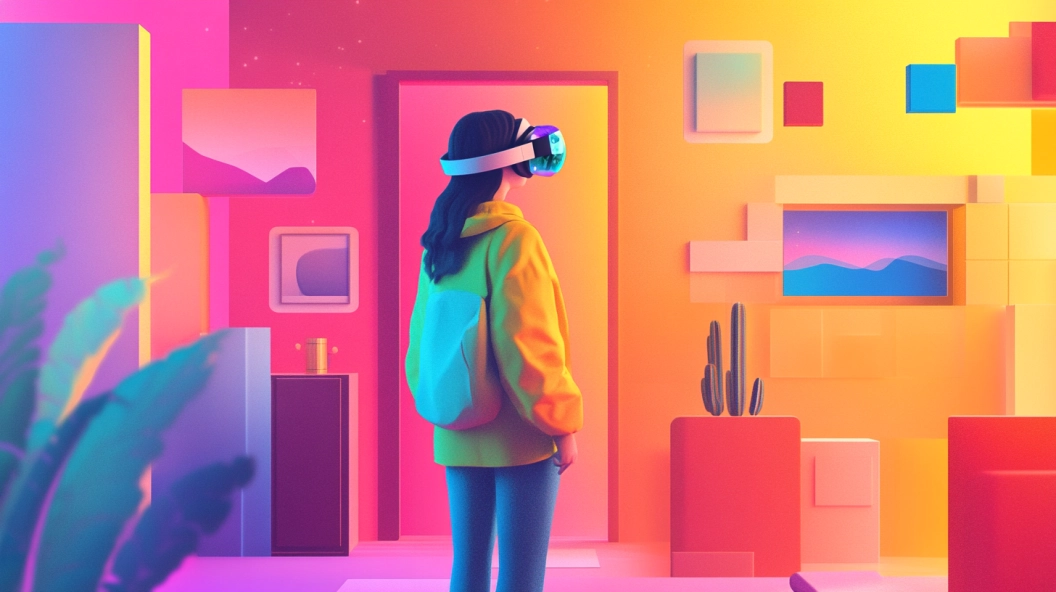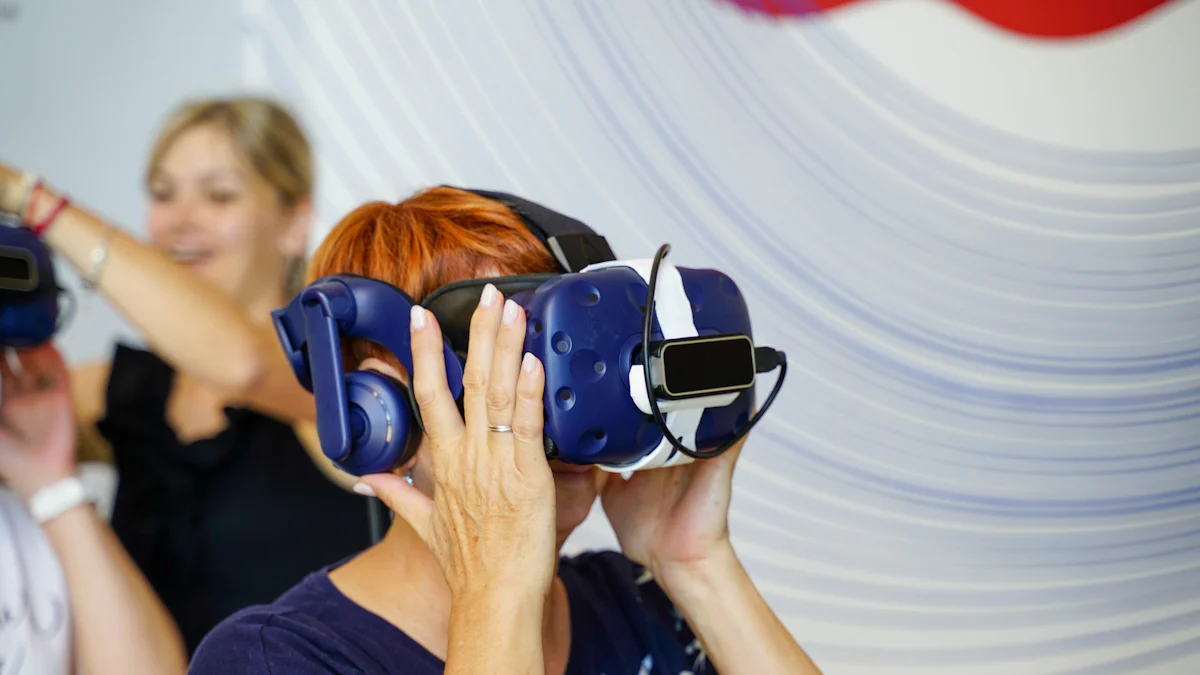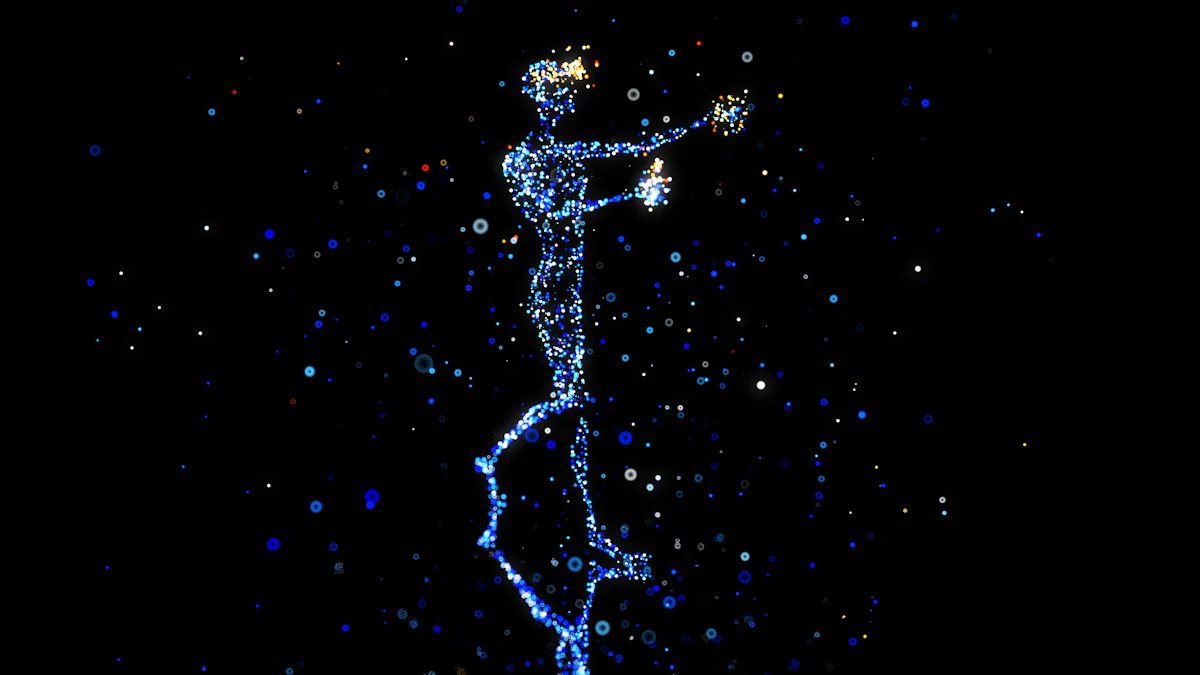Why Microsoft HoloLens is Changing the Game for AR/VR

Augmented Reality (AR) and Virtual Reality (VR) technologies are transforming how you interact with digital content. These innovations are not just for gaming; they are reshaping industries like healthcare, education, and manufacturing. The AR market alone is expected to grow at a remarkable rate, reaching a projected revenue of $40.4 billion in 2024. Enter Microsoft HoloLens, a groundbreaking device that merges the real and virtual worlds. By overlaying holographic images onto your environment, HoloLens offers a mixed reality experience that sets it apart from traditional VR setups. This technology is changing the game, offering new ways to visualize and interact with data.
Understanding AR and VR
Definition and Differences
Augmented Reality (AR)
Augmented Reality (AR) enhances your real-world environment by overlaying digital content. Imagine looking through your smartphone or a headset and seeing digital images or information superimposed on the physical world around you. AR applications are particularly useful in fields like education and healthcare. For instance, in education, AR can overlay informative content onto real-world objects, making learning more engaging. In healthcare, AR can project medical imaging data onto patients, providing real-time guidance during procedures.
Virtual Reality (VR)
Virtual Reality (VR), on the other hand, immerses you in a completely virtual environment. When you put on a VR headset, you enter a computer-generated, three-dimensional world that replaces your awareness of the real world. This technology is widely used for creating interactive experiences, such as virtual tours or gaming. In healthcare, VR can create virtual environments to help distract patients from pain or anxiety, offering a unique therapeutic approach.
Current Trends in AR/VR
Market Growth
The AR/VR market is experiencing significant growth. As industries recognize the potential of these technologies, investments are increasing. The AR market alone is projected to reach $40.4 billion by 2024. This growth is driven by the expanding applications of AR and VR across various sectors, including education, healthcare, and manufacturing. Businesses are leveraging these technologies to enhance productivity and improve user experiences.
Technological Advancements
Technological advancements are propelling AR and VR forward. Innovations in hardware, such as improved sensors and tracking systems, are enhancing the user experience. For example, inside-out tracking technology in devices like Microsoft HoloLens allows you to interact with your environment without needing external sensors. This makes AR experiences more seamless and intuitive. Additionally, advancements in software are enabling more realistic and immersive virtual environments, broadening the scope of VR applications.
Microsoft HoloLens Overview

Development and Launch
Initial Release
Microsoft introduced the HoloLens as a pioneering device in the realm of mixed reality. You experienced a new way to interact with digital content, overlaying holograms onto your real-world environment. This initial release marked a significant step in AR technology, setting the stage for future innovations.
Subsequent Versions
With the release of HoloLens 2, Microsoft enhanced the user experience. The device featured a wider field of view and improved comfort. You could now engage with holograms more intuitively, thanks to advanced eye-tracking technology. These updates made the HoloLens more effective for industrial applications and remote collaboration.
Key Features
Mixed Reality Capabilities
The Microsoft HoloLens integrates digital information seamlessly into your physical world. This mixed reality capability allows you to visualize complex data and collaborate in real-time. Industries like healthcare and manufacturing benefit from this technology, using it for tasks such as training and remote assistance.
Hardware Specifications
The HoloLens 2 boasts a binocular waveguide display with 1440×936 pixels per eye. This resolution enhances clarity, though there's room for improvement. The device operates untethered, providing freedom of movement. Running on Windows Holographic OS, it offers a robust and secure platform for various applications.
Comparative Analysis: HoloLens vs Traditional AR/VR
User Experience
Immersion Level
When you use the HoloLens 2, you experience a unique level of immersion. This device overlays holographic images onto your real-world environment, creating a seamless blend of digital and physical worlds. Unlike traditional VR, which immerses you in a completely virtual space, HoloLens allows you to stay connected to your surroundings. This mixed reality approach enhances your ability to interact naturally with both digital and real elements.
Interaction Methods
HoloLens 2 offers intuitive hand control for navigation. You can use gestures to manipulate holograms, making interactions feel more natural. In contrast, many traditional AR/VR devices rely on external controllers, which can limit your sense of direct engagement. The untethered design of HoloLens 2 also provides freedom of movement, enhancing your overall experience.
Application Scenarios
Enterprise Use Cases
In enterprise settings, HoloLens 2 shines with its versatility. Industries like healthcare and manufacturing benefit from its capabilities. For example, in healthcare, you can visualize complex medical data directly on patients, aiding in procedures and training. Manufacturing professionals use HoloLens for remote assistance and design visualization, improving efficiency and collaboration.
Consumer Applications
While HoloLens primarily targets business applications, it also offers potential for consumer use. Imagine using it for educational purposes, where you can explore interactive lessons that overlay information onto real-world objects. Although traditional AR/VR devices often focus on gaming, HoloLens opens new avenues for learning and exploration, providing a richer and more engaging experience.
Advantages of Microsoft HoloLens

Technological Superiority
Sensor Technology
Microsoft HoloLens stands out due to its advanced sensor technology. You benefit from precise environmental awareness, which enhances your interaction with digital content. The device uses multiple sensors to track your movements and surroundings accurately. This technology allows you to engage with holograms in a way that feels natural and intuitive. By understanding your environment, HoloLens provides a seamless mixed reality experience that traditional AR/VR devices struggle to match.
Spatial Mapping
Spatial mapping is another area where Microsoft HoloLens excels. The device creates a detailed map of your surroundings, enabling holograms to interact with real-world objects. You can place digital content on surfaces or have it move around obstacles, making the experience more immersive. This capability is crucial for applications in fields like architecture and design, where accurate spatial representation is essential. With HoloLens, you gain a tool that bridges the gap between the digital and physical worlds effectively.
Versatility and Flexibility
Cross-Platform Integration
Microsoft HoloLens offers impressive cross-platform integration. You can use it with various software and devices, enhancing its utility in different settings. This flexibility allows you to incorporate HoloLens into existing workflows without significant disruptions. Whether you're in healthcare, education, or manufacturing, the device adapts to your needs. By supporting multiple platforms, HoloLens ensures that you can leverage its capabilities across diverse applications.
Customization Options
Customization options further enhance the versatility of Microsoft HoloLens. You can tailor the device to suit specific requirements, whether for individual or enterprise use. Developers have the freedom to create custom applications that address unique challenges in their industries. This adaptability makes HoloLens a valuable asset for businesses seeking innovative solutions. By offering customization, HoloLens empowers you to maximize its potential in ways that align with your objectives.
Challenges and Limitations
Cost Considerations
Pricing Strategy
Microsoft HoloLens comes with a significant price tag. At $3,500, it targets enterprise customers rather than individual consumers. This pricing strategy reflects its advanced technology and business-focused applications. You might find this cost prohibitive if you're considering it for personal use or small-scale projects.
Market Accessibility
The high price limits market accessibility. HoloLens primarily serves large enterprises that can afford the investment. Smaller businesses and individual developers may struggle to justify the expense. This focus on enterprise customers narrows the potential user base, impacting widespread adoption.
Technical Limitations
Battery Life
Battery life presents another challenge. While HoloLens offers impressive features, its battery may not last through extended sessions. You might need to plan usage around charging times, which can disrupt workflow in demanding environments.
Field of View
The field of view also poses limitations. Although HoloLens 2 improved this aspect, it still restricts how much you can see at once. This constraint might affect your ability to fully immerse in complex tasks, especially in fields requiring detailed visualization.
Future Outlook for HoloLens and AR/VR
The future of augmented reality and virtual reality is brimming with potential, and Microsoft HoloLens is at the forefront of this evolution. As industries continue to explore the capabilities of mixed reality, the demand for innovative solutions like HoloLens is set to grow exponentially.
Potential Developments
The future of HoloLens is promising, with advancements on the horizon. Microsoft is continuously working on enhancing the device's capabilities, focusing on improving user experience and expanding its applications. The integration of AI and machine learning could revolutionize how users interact with holographic environments, making them more intuitive and responsive.
Moreover, the potential for HoloLens in industries such as healthcare, education, and manufacturing is immense. For instance, in healthcare, the device could enable more precise surgeries and improve patient outcomes. In education, it could transform learning experiences by providing immersive and interactive environments. These advancements will further solidify HoloLens as a leader in the mixed reality space.
Impact on AR/VR Industry
HoloLens is already making waves in the AR/VR industry, and its impact is only expected to grow. The device's ability to seamlessly blend digital and physical worlds has set a new standard for what is possible in augmented reality. This has spurred innovation across the industry, pushing companies to develop more advanced and immersive technologies.
As the demand for mixed reality solutions continues to rise, HoloLens is well-positioned to lead the charge. Its versatility and adaptability make it an ideal choice for a wide range of applications, from healthcare and education to manufacturing and entertainment. This has made it an invaluable tool for industries looking to enhance productivity and improve user experiences.
Testimonials:
Alex Kip, a pioneer in the field, once said, “HoloLens is a game-changer, transforming the way we interact with the world around us.” This sentiment is echoed by many who have experienced the device's capabilities firsthand.
Toyota's Kleiner emphasized the importance of HoloLens in their operations, stating, “We want HoloLens to be our screens, revolutionizing how we work and interact with technology.”
Conclusion
Summary of Key Points
HoloLens' Impact on AR/VR
Microsoft HoloLens has transformed how you interact with augmented and virtual reality. By merging digital and physical worlds, it offers a unique mixed reality experience. This technology speeds up training and problem-solving by overcoming location and time barriers. You can collaborate more effectively, making it a preferred choice in industrial settings. HoloLens revolutionizes sight and perception, providing new ways to see and interact with the world.
Future Prospects
The future of HoloLens looks promising. Continuous advancements will enhance user experiences and expand applications. Eye-tracking technology offers innovative ways to interact with holograms, making the interface more intuitive. As industries like healthcare and education explore these capabilities, HoloLens will unlock new possibilities. You can expect it to lead the charge in mixed reality, setting new standards for innovation and collaboration.
Microsoft HoloLens is transforming how you engage with augmented and virtual reality. By merging digital and physical worlds, it enables remote collaboration and problem-solving. Imagine a worker at Toyota using HoloLens to connect instantly with a colleague across the country. This technology revolutionizes industries by providing immersive experiences, like visualizing Mars at NASA's Jet Propulsion Laboratory.
Looking ahead, HoloLens will continue to lead in mixed reality. As advancements unfold, you'll discover new ways to interact with holograms, unlocking possibilities in fields like healthcare and education.
See Also
Shaping Employee Experience with Microsoft Viva
Exploring Microsoft Career Opportunities in 2024
Future AI Career Paths at Microsoft
